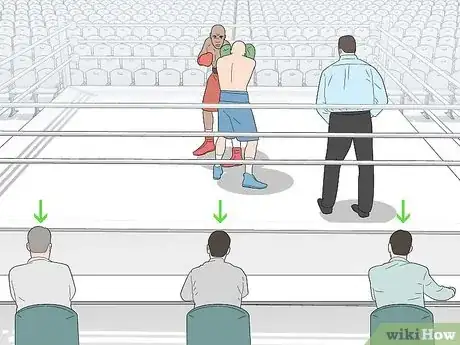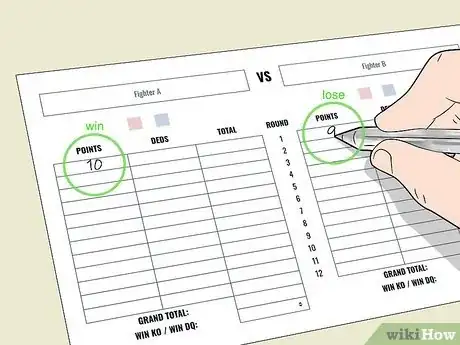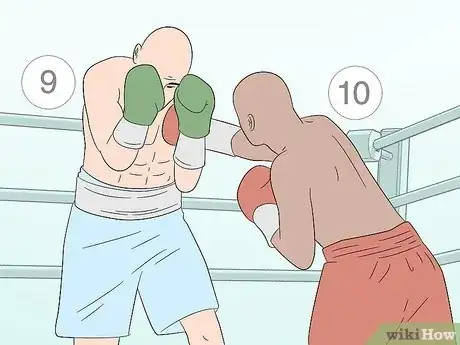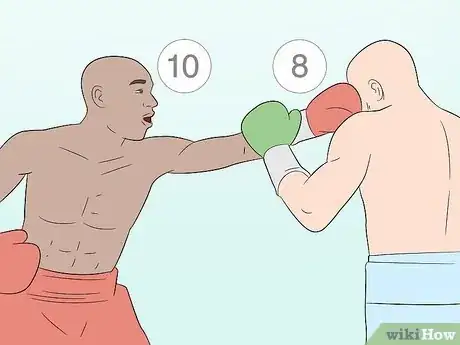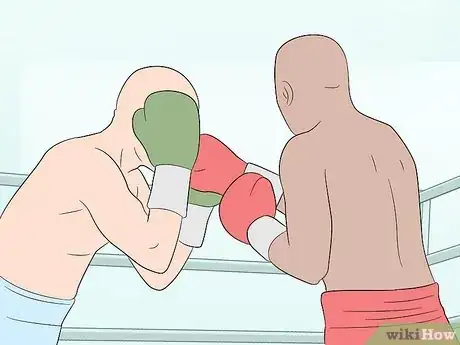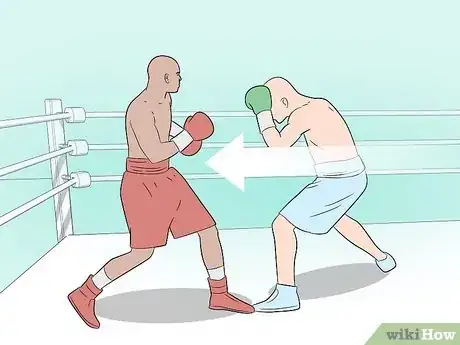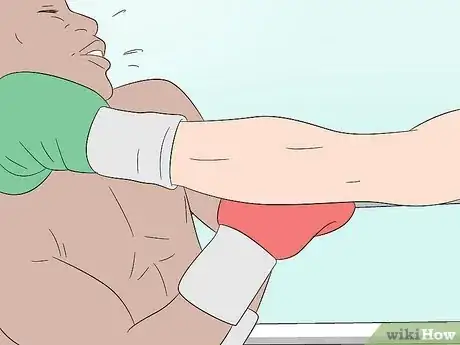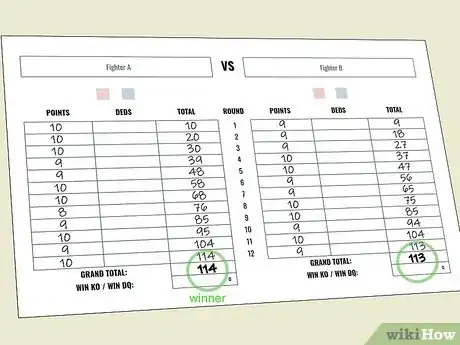This article was co-authored by David Engel and by wikiHow staff writer, Caroline Heiderscheit. David Engel is a Muay Thai Instructor and Self Defense Trainer based in the San Francisco Bay Area. With over 15 years of martial arts instruction and training experience, David runs California Martial Athletics with co-owner Joe Chernay. He has created and maintained martial arts programs at Rise Combat Sports in San Francisco and Round 5 Martial Arts Academy in San Leandro, with a mission to provide students with a level of comfort and competency that manifests both within and outside the martial arts context. He is also a registered cornerman for amateur and pro competitors under the IKF (International Kickboxing Federation). David was the youngest apprentice instructor of the Thai Boxing Association of America under Ajarn Chai Sirisute (2009), and was a top-ranked amateur competitor in his weight class (127-130 lb) in California between 2013 and 2015.
There are 8 references cited in this article, which can be found at the bottom of the page.
This article has been viewed 20,358 times.
When you think of boxing, you may imagine tense countdowns, wild KOs, and dramatic wins. But when the fight doesn't end in a big knockout, how do you find out who won the match? The sport of boxing is complex and fascinating, but the scoring rules are actually way easier to follow than you'd think. We're walking you through everything you need to know. From the point system to the final results, this is your complete guide to how to score in boxing—so read on!
Steps
How does the point system work in boxing?
-
1
-
2The most effective fighter in each round gains a point advantage. There are a few categories that the judges will evaluate fighters on (which we’ll cover later), but on the whole, the fighter who lands the most punches and inflicts the most damage will gain a point advantage.[3]
-
3When a boxer falls (also called a "knockdown"), they lose a point. When a boxer falls, the judge starts a ten-second countdown, and at some point, the boxer gets up on their feet again, that's called a "knockdown." Even though isn't a full knockout, it still negatively affects the boxer's score.[4]
- If one fighter gets a “knockdown”, at the end the result will be “10-8”.
- If that same fighter gets a second “knockdown” in the same round, the result will be "10-7". And, if that same fighter gets a third knockdown in the same round, the result will be "10-6". "6" is the minimum score he can get. [5]
- If both fighters get a “knockdown” in the same round, their deductions will cancel each other out, meaning that the end result could still be “10-9” (not “9-8”).
-
4The judges may award a two-point lead if a fighter really dominated. Even if neither fighter experienced a knockdown, the judges may still award a two-point lead if one fighter landed significantly more powerful punches than the other. This, though, is rare—if a fighter wins a two-point lead, then their win was major.[6]
- This may happen when both fighters had knockdowns but one fighter’s knockdown was interrupted when the round’s time expired (meaning that they might've gotten lucky—with more time, they may have faced a full KO).
-
5The referee will instruct judges to deduct a point for fouls. When a fighter intentionally breaks the rules, they give their opponent a point advantage. This could be hitting the navel, hitting behind the ear, headbutting, biting, abusive language—and much more.[7]
- A fighter’s fouls can also be incidental. Though they won’t lose a point for this the first time, if they repeatedly log accidental fouls (especially for the same offense), the referee could still choose to deduct a point.
What do judges look for when scoring a fight?
-
1Effective aggression. Shows of aggression are important (it is boxing, after all!), but judges value a fighter’s ability to throw punches that actually land. If one fighter throws 100 punches (and effectively lands only 10 of them) while their opponent lands 10/10 blows, the second fighter earns the advantage. Even though both fighters did the same damage, the second fighter was more effective.[8]
-
2Ring generalship. Unofficially called the “ring general,” one fighter usually manages to set the tone, style, and pace of a round or match. This is probably the hardest category to spot if you’re not super familiar with the sport. If you’re having trouble, pay attention to which fighter seems to draw the other one into each spar.[9]
-
3Defense. When people think of boxing, they think of throwing punches—but it's equally important to avoid opponent's punches. Judges value a fighter’s ability to duck, perry, bob and weave, and block. Not only does a solid defensive fighter earn favor from the judge, but they also save their strength for the rest of their fight.[10]
- Plus, they can actually hurt their opponent’s “effective aggression” evaluation—because if the other fighter lands less punches, they’re less effective.
-
4Hard and clean punches. Judges want fighters’ punches to land “flush,” or powerfully and in the right location. This one can be hard to spot to the untrained eye. Sometimes a punch seems solid, but it was actually partly blocked and forced to slow down or change course slightly. The more hard and clean punches a fighter lands, the higher the judges will rate them.[11]
- The sound isn’t enough to determine whether a punch was hard and clean. When glove strikes glove, that can make a loud noise—but it isn’t a clean punch.
- One of the best ways to tell if a punch landed flush is by where it hits. If it lands in an effective spot (squarely on the chin or cheek, for example), that’s a sign that it landed flush.
- Then, the opponent’s reaction is a good sign as well. If they wobble, fall, or stagger backward, there’s a good chance that the punch landed flush, too.
- If you want to be a good boxer, you should look at details of previous fights and take notes on wins and losses that you have had.
- Have a strong support system, such as teammates, friends, or family.
- Besides this, you should have good coaches and work ethics.[12]
References
- ↑ https://www.abcboxing.com/abc-regulatory-guidelines/
- ↑ https://www.myactivesg.com/sports/boxing/how-to-play/boxing-for-beginners/scoring-in-boxing
- ↑ https://www.myactivesg.com/sports/boxing/how-to-play/boxing-for-beginners/scoring-in-boxing
- ↑ https://www.abcboxing.com/abc-regulatory-guidelines/
- ↑ https://izquierdazo.com/agenda/Como-se-lleva-la-puntuacion-de-una-pelea-de-box-La-guia-para-la-tarjeta-del-juez-de-boxeo-20220618-0001.html
- ↑ https://www.boxing247.com/news/lotierzo1507.php
- ↑ https://law.lis.virginia.gov/admincode/title18/agency120/chapter40/section350/
- ↑ https://www.tampabay.com/archive/2006/06/17/how-to-score-a-fight/
- ↑ https://www.tampabay.com/archive/2006/06/17/how-to-score-a-fight/
- ↑ https://www.tampabay.com/archive/2006/06/17/how-to-score-a-fight/
- ↑ https://www.tampabay.com/archive/2006/06/17/how-to-score-a-fight/
- ↑ https://evolve-mma.com/blog/5-tips-to-go-from-good-to-great-in-boxing/
- ↑ https://www.myactivesg.com/sports/boxing/how-to-play/boxing-for-beginners/scoring-in-boxing
